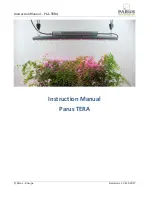
Setup
1.
Position the latex spinal tubing in the spine
by sliding the exit tubing and spinal tubing
through the top of the spine and out through
the bottom.
(See figure 1.)
2.
Snap the spine into the tissue block.
(See
figure 2.)
3.
Feed the clear up-tube through the flange in
the upper left corner of the back cavity.
(See
figure 3.)
4.
Position tissue block/spine inside the back
cavity by first inserting tab on base of spine
into slot on body and pushing the rest of the
tissue block into place.
(See figure 4.)
5.
Attach 100 ml Fluid Supply Bag (Bag B) by
connecting Stopcock B to the exit tubing.
(See figure 5.)
The system will also work
without the bag; fluids can be drained into a
small container or onto a towel.
6.
Attach the up-tube to the Luer barb of
Stopcock A.
(See figure 6.)
7.
Snap one of the skin pads onto the body.
(See figure 7.)
The clear skin pad enables
students to visualize the underlying anatomy
while palpating landmarks.
Due to the nature
of the clear material, injections will leave visi-
ble needle tracks
. The opaque skin pad can
be used for more realistic hands-on training,
including injections.
8.
A light dusting of baby powder will give the
skin a more realistic feel.
Setup
1.
Position the latex spinal tubing in the spine
by sliding the exit tubing and spinal tubing
through the top of the spine and out through
the bottom.
(See figure 1.)
2.
Snap the spine into the tissue block.
(See
figure 2.)
3.
Feed the clear up-tube through the flange in
the upper left corner of the back cavity.
(See
figure 3.)
4.
Position tissue block/spine inside the back
cavity by first inserting tab on base of spine
into slot on body and pushing the rest of the
tissue block into place.
(See figure 4.)
5.
Attach 100 ml Fluid Supply Bag (Bag B) by
connecting Stopcock B to the exit tubing.
(See figure 5.)
The system will also work
without the bag; fluids can be drained into a
small container or onto a towel.
6.
Attach the up-tube to the Luer barb of
Stopcock A.
(See figure 6.)
7.
Snap one of the skin pads onto the body.
(See figure 7.)
The clear skin pad enables
students to visualize the underlying anatomy
while palpating landmarks.
Due to the nature
of the clear material, injections will leave visi-
ble needle tracks
. The opaque skin pad can
be used for more realistic hands-on training,
including injections.
8.
A light dusting of baby powder will give the
skin a more realistic feel.
Figure 1
Figure 1
Figure 3
Figure 3
Figure 2
Figure 2
Figure 4
Figure 4
Figure 5
Figure 5
Figure 6
Figure 6
Figure 7
Figure 7
NP061_14_LF01006_CaudalInjectindd.indd 4
4/30/14 3:00 PM
























